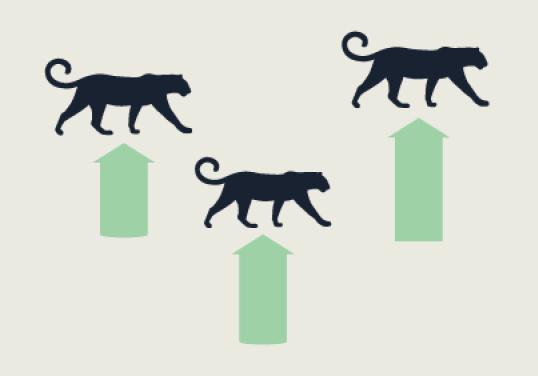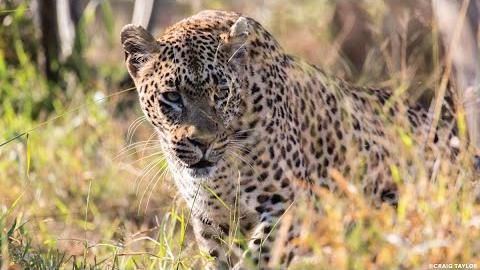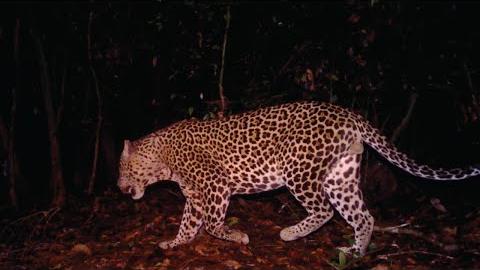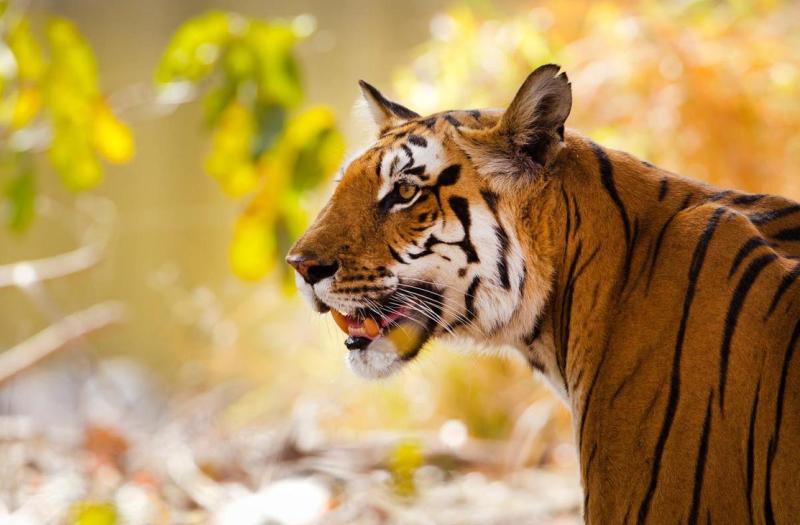About Leopards
Renowned for their stunning, intricately patterned coats and remarkable adaptability, leopards tragically face widespread persecution, making them among the most imperiled large cat species worldwide. Extinct in 13 countries and potentially disappearing from seven more, leopards have been erased from at least two-thirds of their historical habitat in Africa and a staggering 84 percent of their former range in Eurasia.
Given their vast distribution, comprehensive monitoring of leopard populations across Africa and Eurasia is imperative to identify areas requiring urgent conservation efforts and to facilitate effective species management. Panthera's global efforts leave a lasting impact, particularly in Southern Africa, where we leverage citizen science to conduct extensive, long-term monitoring of leopards within the Sabi Sands Game Reserve.
In West and Central Africa, we provide vital support to conservation partners engaged in monitoring the region's threatened leopard populations. Furthermore, in the Middle East, Panthera collaborates with the Royal Commission for AlUla on the Arabian Leopard Initiative, striving to rescue the Critically Endangered Arabian leopard from the brink of extinction.
Our Goals

Collect robust population data on leopards' status across 20%+ of range by 2029

Use these data to influence policy and management at a national and regional scale.

Stabilize and increase leopard populations across 20%+ of range, reducing habitat degradation and the harvesting of leopards by 2034
Where Do Leopards Live?
Known for its incredible adaptability, the leopard has the largest range of all the big cats: spanning roughly 62 countries across much of Africa and Eurasia. They occur in a wide range of habitats including deserts, savanna grasslands, mountains and rainforests.
Where We Work:
Saudi Arabia: Supporting the Royal Commission for AlUlA (RCU), we collaborate with Saudi Arabian authorities and local organizations to research the Critically Endangered Arabian leopard. We're establishing conservation strategies, including habitat preservation and community engagement initiatives, to safeguard the critically endangered Arabian leopard population in Saudi Arabia.
South Africa: Panthera’s Leopard Program fosters coexistence between people and wild cats. In southern Africa, Panthera and partners have produced and distributed over 18,500 synthetic leopard furs to local communities for use in traditional ceremonies, saving the lives of countless leopards. Panthera has also implemented a long-term monitoring program tracking the status of key leopard populations across South Africa, which helps to improve management and track the effectiveness of conservation work.
West and Central Africa: Our research across these regions is advancing conservation. Leopard surveys with partners in West and Central Africa, in addition to long-term leopard studies in South Africa, have guided authorities on where to concentrate patrol efforts and form wildlife corridors.
Zambia: Since August 2021, Panthera has supported Zambia’s Department of Parks and Wildlife (DNPW) in attending 24 Human-Carnivore Conflict Responses involving lions and leopards. As of June 2023, this support has resulted in zero leopards retaliated against by communities. Panthera also gathers important information on the status and trend of key leopard populations in Zambia
Zimbabwe: Panthera partners with the Zimbabwe Parks and Wildlife Management Authority (ZimParks) to monitor leopard populations across Zimbabwe, supporting management.
We also collaborate with partners in Gabon to conduct critical research on the illegal wildlife trade.
- Historic Leopard Range
- Current Leopard Range
Leopard FAQs
What do leopards eat and how do they hunt?
Leopards use their agility to hunt over 100 different animals such as impala and springbok, killing their prey with either a suffocating bite to the throat or the back of the neck.
How can you tell the difference between a leopard and a jaguar?
While leopards live in Africa and Asia, jaguars can be found across the Americas. Leopards are covered in more solid spots and rosettes, jaguars sport blocky rosettes with distinct internal spots.
Can leopards purr?
Most big cats, including leopards, cannot purr. Instead, leopards are known for their rasping call. This iconic vocalization is due to the hyoid bone in the cat’s throat being attached to a specialized stretching ligament.
What are the threats facing leopards?
Leopards are threatened by illegal trade and poaching for their skins and other body parts, conflict with local people, rampant bushmeat poaching (depletion of their natural prey) and poorly managed trophy hunting.
How can we save leopards?
We can protect leopards by reducing human-leopard conflict and poaching, stabilizing and increasing prey numbers and reducing unsustainable legal trophy hunting.






